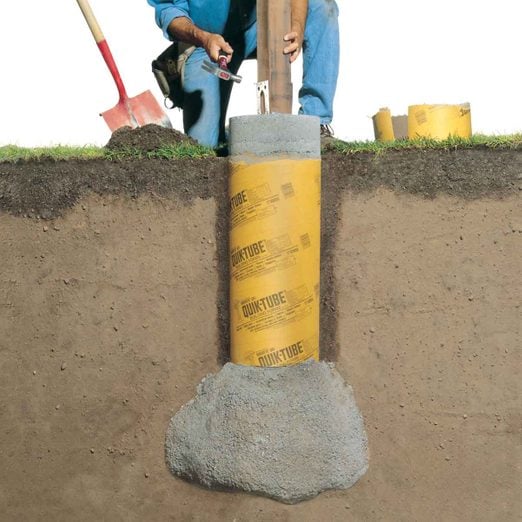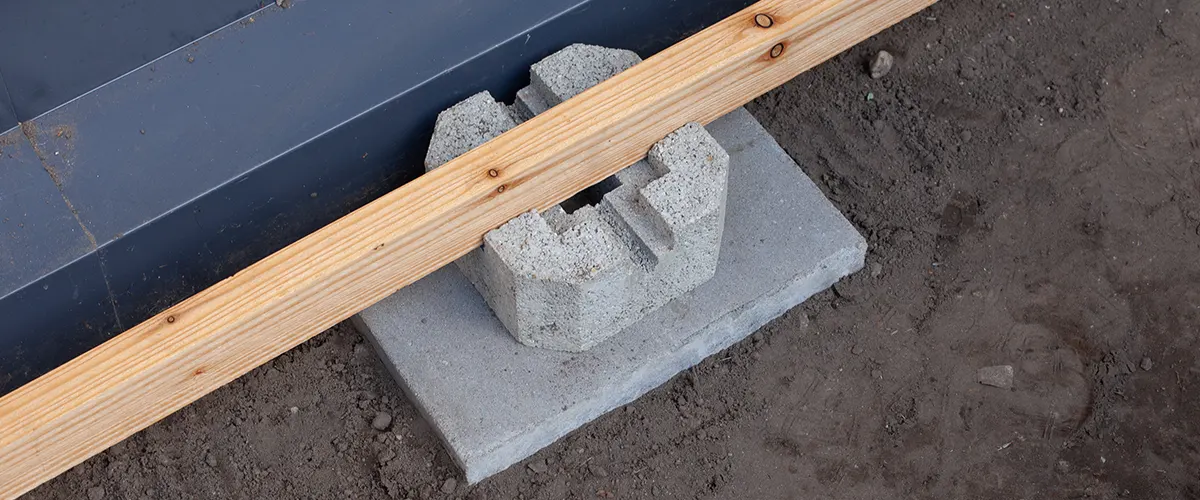Deck Footings Revealed: Recognizing the Trick Parts of a Trusted Deck Structure
Deck Footings Revealed: Recognizing the Trick Parts of a Trusted Deck Structure
Blog Article
Professional Tips for Setting Up Deck Footings to Assistance Your Outdoor Area
When it comes to constructing a deck, one of the most crucial components to consider is the setup of proper grounds. These grounds are the foundation upon which your outside area will certainly relax, supplying stability and support for years to come. What specifically does it take to set up deck grounds properly?
Significance of Proper Deck Footings
Proper deck footings are necessary for making certain the security and durability of your exterior room. When constructing a deck, it is vital to take notice of the foundation on which it will relax. Deck footings supply the essential assistance for the entire structure and help disperse the weight equally - Deck Footings. Without solid and effectively mounted footings, your deck may end up being unpredictable, leading to security hazards and pricey repairs.

In enhancement to security, correct deck footings likewise add to the long life of your outdoor area (Deck Footings). Grounds that are made and created to hold up against the elements and dirt problems in your location will certainly assist prevent the deck from changing or clearing up with time. By making sure the grounds are effectively sized and mounted, you can decrease the threat of damage to the deck structure, expanding its life-span and lowering the demand for pricey repair work or replacements

Choosing the Right Kind Of Footings
When selecting the suitable kind of footings for your deck, it is vital to think about factors such as soil problems, local building regulations, and the general layout of your exterior space. The kind of footing you pick will certainly play a vital role in making certain the security and durability of your deck.
One typical sort of ground is the concrete footing. Concrete grounds are suitable for many soil conditions and offer superb support for decks. They are commonly mounted below the frost line to stop shifting and settling due to freezing and thawing cycles. An additional alternative is helical piers, which are optimal for locations with unpredictable soil or high water tables. These piers are screwed into the ground and offer solid support for the deck.
In some cases, you might need to make use of specific grounds, such as stack footings or deep structures, if you are developing a large or multi-level deck. These footings are developed to disperse the weight of the deck over a bigger area, ensuring security and preventing sinking or working out.
Prior to choosing a kind of footing, it is necessary to consult local building regulations and guidelines to make sure compliance. In addition, think about the style and meant use your outdoor area. Aspects such as the size, form, and load-bearing needs of your deck will certainly affect the kind of footing that is most appropriate.
Preparing the Ground for Footing Installment
To properly prepare the ground for footing installation, it is vital to examine the soil conditions and take required steps to make certain stability and longevity of the deck. The first action is to excavate the area where the footings will certainly be installed.
Once the location has actually been dug deep into, the next action is check this to compact the soil. This can be done utilizing a plate compactor or by utilizing a hand tamper. Condensing the soil assists to get rid of any spaces or air pockets, which can cause settling and instability gradually.
After compacting the soil, it is essential to lay a layer of gravel or crushed rock at the base of the excavation. This will certainly give drainage and help to avoid water from pooling around the grounds, which can lead to disintegration and instability.
Step-by-Step Overview to Setting Up Deck Footings
After appropriately preparing the ground for footing installment, the following step is to start the process of installing deck grounds. This step-by-step guide will certainly offer you with a clear understanding of exactly how to install deck footings for your outdoor room.
Determine the location: Beginning by noting the placements of the deck footings making use of risks and string. Make sure that the places line up with the layout and design of your deck.
Dig the holes: Utilize an article hole digger or an auger to dig the holes for the grounds. The depth and size of the holes ought to remain in conformity with regional building codes and the certain requirements of your deck style.
Degree the openings: Use a level to ensure that the openings are dug to the appropriate depth and are level with each other. (Deck Footings)
Add crushed rock: Area a layer of crushed rock at the bottom of each opening to enhance water Going Here drainage and stop the wood from decaying.
Insert the grounds: Position the footings into the holes, making sure they are level and plumb. Use a degree and a gauging tape to make sure precision.
Safeguard the grounds: Put concrete into the holes around the footings, filling them to the top. Use a post degree to make sure the footings remain degree as the concrete sets.
Enable time for treating: Allow the concrete treatment according to the supplier's directions prior to waging the deck construction.
Typical Mistakes to Stay Clear Of Throughout Footing Installment
One crucial aspect to think about during the installation of deck grounds is avoiding usual mistakes that can compromise the stability and durability of your outdoor area. While deck footings may look like a straightforward and straightforward component of the construction procedure, overlooking certain variables can bring about costly repairs and prospective safety dangers down the line.

Additionally, neglecting to install proper water drainage actions can cause water to accumulate around the footings, bring about rot, decay, and the eventual weakening of the deck's structure. Additionally, using the incorrect kind of footing material or falling short to appropriately protect the grounds can endanger their architectural honesty.
To stay clear of these errors, it is necessary to seek advice from with an expert or follow industry standards to ensure correct footing installment. By doing so, you can make sure the security and long life of your exterior space, offering a pleasurable and risk-free atmosphere for several years to find.
Verdict
To conclude, mounting appropriate deck footings is vital for the security and longevity of your exterior space. By selecting the right type of grounds and properly preparing the ground, you can make certain a solid foundation for your deck. Following a step-by-step guide and preventing common blunders throughout footing installment will better boost the resilience and safety and security of your deck.
Appropriate deck footings are crucial for guaranteeing the look at these guys security and longevity of your outdoor space. The grounds serve as a connection between the ground and the deck, allowing the weight of the deck and its occupants to be distributed equally right into the dirt.One typical kind of ground is the concrete ground. Place the footings: Place the footings right into the holes, making certain they are degree and plumb. Secure the grounds: Pour concrete into the holes around the footings, loading them to the top.
Report this page